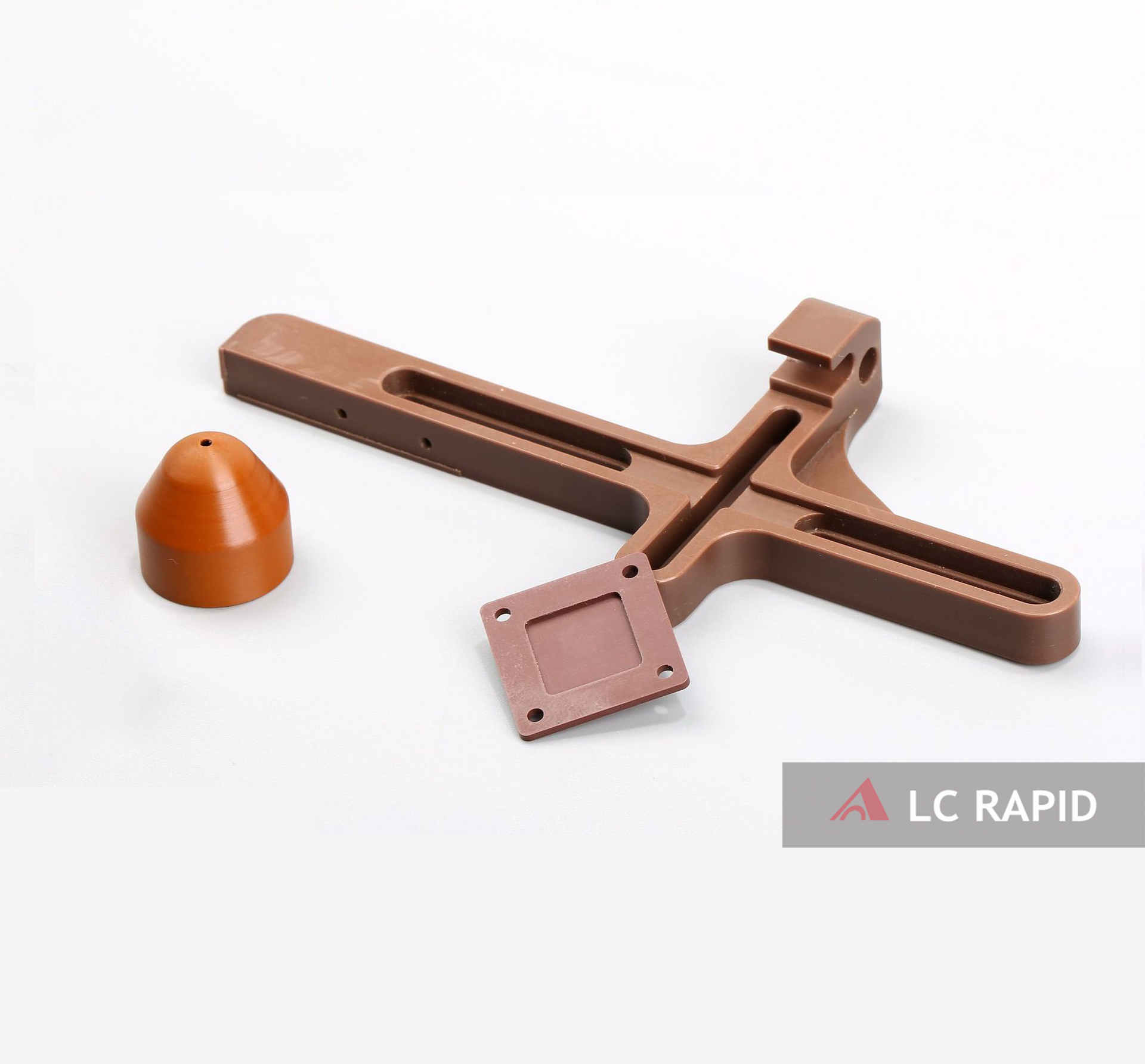+86-18898486814
sales@lcrapid.com
POM is obtained by polymerizing formaldehyde as raw materials. POM-H (polyoxymethylene homopolymer) and POM-K (polyoxymethylene copolymer) are thermoplastic engineering plastics with high density and high crystallinity, which has good physical, mechanical and chemical properties, especially excellent friction resistance.
POM rapid moulding is a crystalline plastic with obvious melting point. Once it reaches the melting point, the melt viscosity drops rapidly. When the temperature exceeds a certain limit or the melt is heated for too long, it will cause decomposition.
Copper is a catalyst for POM degradation, and copper or copper materials should be avoided in the parts in contact with POM melt.

POM has good mechanical properties and rigidity, and accepts metal materials. It is a good substitute for copper, cast zinc, steel and other metal materials. POM has excellent fatigue resistance and creep resistance, good wear resistance, self-lubrication and friction resistance. And it has excellent thermal stability and electrical insulation properties. The working temperature is from -50 degrees to 110 degrees.
1. Plastic treatment
POM has low water absorption, generally 0.2%-0.5%. Under normal circumstances, POM can be processed without drying, but wet raw materials must be dried. The drying temperature is above 80℃, and the drying time is above 2 hours. The details should be carried out according to the supplier's information.
The proportion of recycled materials used generally does not exceed 20-30%. But it depends on the type of product and the end use, and sometimes it can reach 100%.
2. Selection of plastic machine
POM has no special requirements for injection molding processing machines except that the screw should have no stagnant area.
3. Mold and gate design
4. Melting temperature
It can be measured by air injection method: POM-H can be set to 215°C (190°C-230°C); POM-K can be set to 205°C (190°C-210°C).
5. Injection molding speed
It is common that the speed is medium-fast, since ripples will occur if the it is too slow, and if it is too fast, ripples and shear overheating are prone to occur.
6. Back pressure
The lower the better, generally not more than 200bar.
7. Detention time
If the equipment has no glue retention point: POM-H can stay at 215℃ for 35 minutes; POM-K can stay at 205℃ for 20 minutes without serious decomposition.
At the injection molding temperature, the melt cannot stay in the barrel for more than 20 minutes. POM-K can stay for 7 minutes at 240°C. If the machine is shut down, the temperature of the barrel can be reduced to 150°C. If it is to be shut down for a long time, the barrel must be cleaned and the heater must be turned off.
8. Shutdown
To clean the barrel, you must use PE or PP, turn off the electric heating, and push the screw to the front position. The barrel and screw must be kept clean. Impurities or dirt will change the overheating stability of POM (especially POM-H). Therefore, when the halogen-containing polymer or other acidic polymer is used up, the POM material can be used after the PE is cleaned up, otherwise it will explode. Improper use of pigments, lubricants, or materials containing GF nylon will cause degradation of the plastic.
9. Post-processing
For parts that are not used at normal temperatures and require high quality, heat treatment is required. For the effect of annealing treatment, immerse the products in a 30% hydrochloric acid solution for 30 minutes for inspection, and then visually observe to determine whether there are residual stress cracks.
1. Causes and countermeasures of flashing
(1) The temperature of the melt is too high, which should be reduced appropriately.
(2) The injection pressure is too high. The temperature of the barrel and nozzle should be appropriately reduced.
(3) Insufficient clamping force. The clamping force should be increased.
(4) Insufficient holding pressure. The holding time of injection should be extended appropriately.
(5) The injection speed is too slow or too fast. It should be adjusted appropriately according to the specific situation.
(6) The mold temperature is too high. Reduce it appropriately.
(7) The advancing time of the ejector rod is too short. Extend it appropriately.
(8) The design of the pouring system is unreasonable. The cross-sectional area of the gate and runner should be appropriately enlarged.
LC Rapid was established in 2008 and has grown rapidly, driven by our manufacturing expertise and unremitting commitment to helping customers meet their project engineering needs. We also help customers manufacture parts and products in on-demand manufacturing.
LC Rapid's project engineering team is always responsible for ensuring that parts are completed on time and correctly. We make it easier for our customers-from start-ups to Fortune 100 companies-to manufacture on-demand by providing the most effective way to source high-quality customized parts and products. We are committed to providing our customers with an innovative way to easily work with our manufacturing facilities. If necessary, please consult.